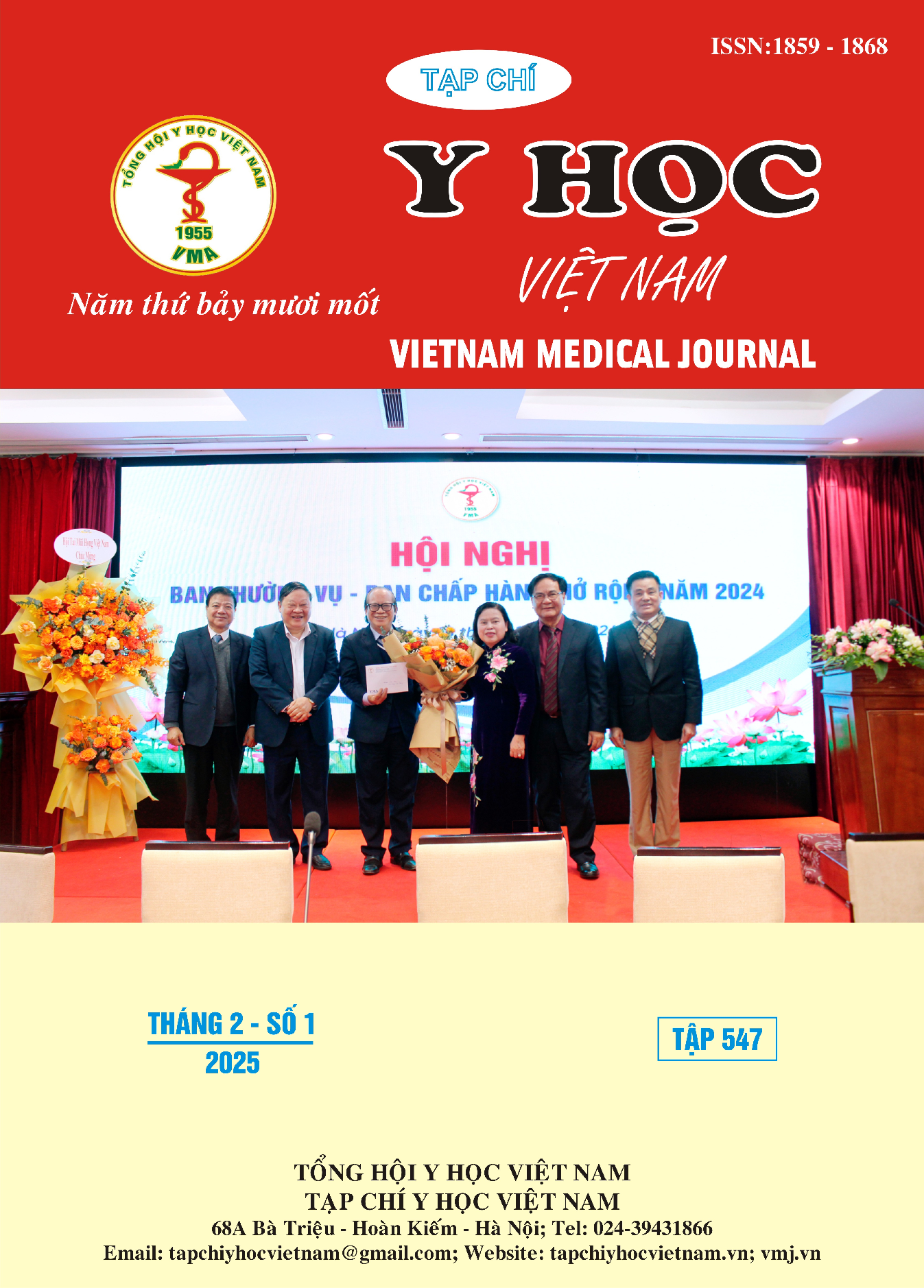EVALUATIONS OF THE RESULTS OF FUNCTIONAL ELECTRICAL STIMULATION COMBINED WITH OCCUPATIONAL THERAPY IN THE REHABILITATION OF GRIP FUNCTION IN STROKE PATIENTS
Main Article Content
Abstract
Objectives: To evaluate the results of functional electrical stimulation (FES) combined with occupational therapy in the Rehabilitation of grip function in stroke patients. Subject and methods: Prospective intervention study, comparing before and after treatment on 89 patients diagnosed with stroke, treated at the Rehabilitation Center - Bach Mai Hospital from August 2023 to August 2024. Patients were treated for 28 days according to the regimen: Occupational therapy 30 minutes/time, 1 time/day; Functional electrical stimulation of the paralyzed finger area with FES machine 30 minutes/time, 1 time/day (off on Saturday and Sunday). Results were evaluated through the following scales: Upper limb motor function (FMAT), Motor Activities Log- Quality of movement scale (MAL-QOM), Action research arm test (ARAT), Hand Movement Scale (HMS), and overall treatment results based on the total converted score of the items. Results: Average age 64.6 ± 10.6 years, of which left hemiplegia accounted for 57.3%. Overall treatment effectiveness: good 68.5%, fair 25.8%, average 5.7%. Upper limb motor function (FMAT) increased the D0-D28 score significantly (p<0.001) with 7.9% good, 68.5% fair, and 23.6% average. Upper limb use level (MAL-QOM) increased significantly (p<0.05), and 65.2% achieved 3 points at D28. Upper limb motor ability (ARAT) improved slowly, the average score increase after treatment was 20.2 ± 9.0 points (p<0.01). Hand movement function (HMS): 3.4% achieved 5 points, 37.1% achieved 4 points, 57.3% achieved 3 points, 2.2% achieved 2 points. Conclusion: FES intervention combined with occupational therapy significantly improves grip ability in post-acute stroke patients.
Article Details
Keywords
Stroke rehabilitation, functional electrical stimulation (FES), occupational therapy, grip function
References
2. Lê Thị Hương, Dương Thị Phượng, Lê Thị Tài, Nguyễn Thùy Linh, Phạm Thị Duyên (2016). Tỷ lệ mắc đột quỵ tại 8 tỉnh thuộc 8 vùng sinh thái Việt Nam năm 2013 – 2014. Tạp chí Nghiên cứu Y học, TCNCYH 104 (6), tr. 1-8.
3. Mai Duy Tôn (2022). Tình hình đột quỵ tại Việt Nam: một nghiên cứu đa trung tâm. Hội nghị Đột quỵ Quốc tế 2022, ngày 5/11/2022.
4. Nguyễn Thị Thanh Nga (2020). Đánh giá kết quả phục hồi chức năng bàn tay trên bệnh nhân chấn thương sọ não bằng phương pháp vận động cưỡng bức, Luận văn thạc sĩ Y học, Trường Đại học Y Hà Nội.
5. Nguyễn Thuỳ Trang (2021). Đánh giá kết quả phối hợp gương trị liệu và vận động cưỡng bức bên liệt cường độ thấp trong phục hồi chức năng chi trên ở người bệnh nhồi máu não sau giai đoạn cấp, Luận văn Thạc sĩ Y học, Trường Đại học Y Hà Nội.
6. Milosevic, M., Marquez-Chin, C., Masani, K. et al. (2020). Why brain-controlled neuroprosthetics matter: mechanisms underlying electrical stimulation of muscles and nerves in rehabilitation. BioMed Eng OnLine, 19, 81.
7. Mozaffarian, D., Benjamin, E. J., Go, A. S., Arnett, D. K., Blaha, M. J., Cushman, M., et al. (2016). Heart Disease and Stroke Statistics-2016 Update: A Report from the American Heart Association. Circulation, 133(4), e38-360.
8. Murray, C. J., & Lopez, A. D. (2013). Measuring the global burden of disease. New England Journal of Medicine, 369(5), 448-457.


